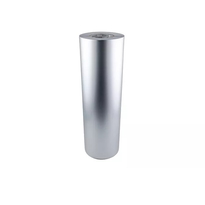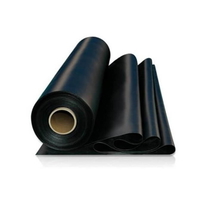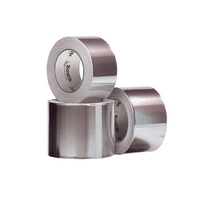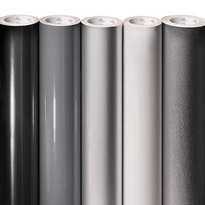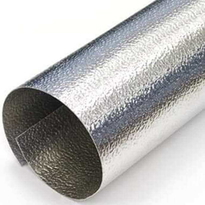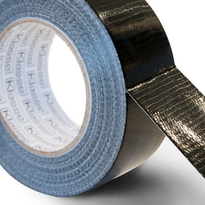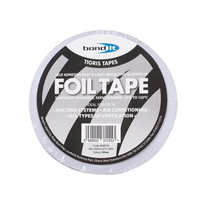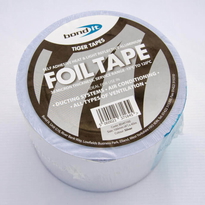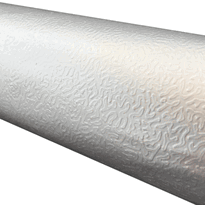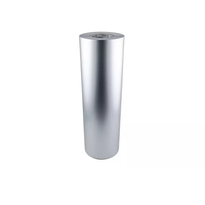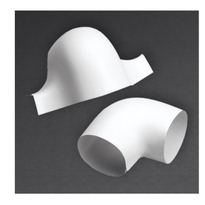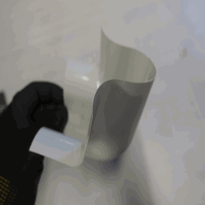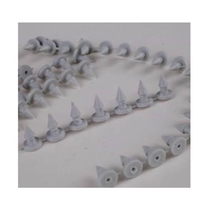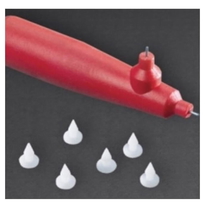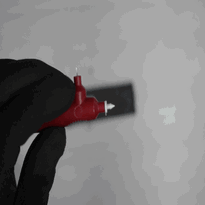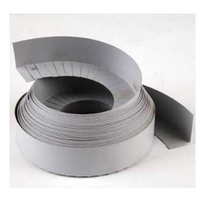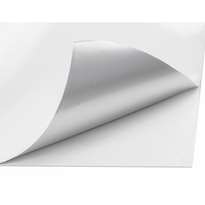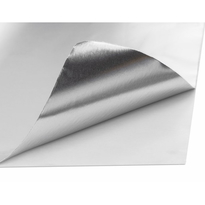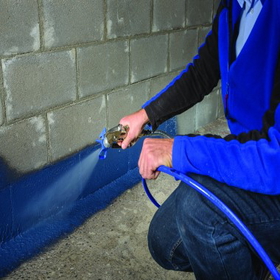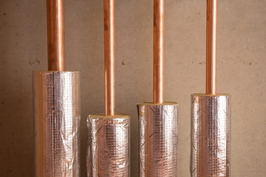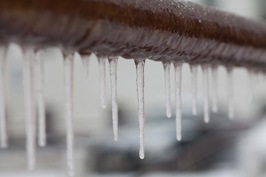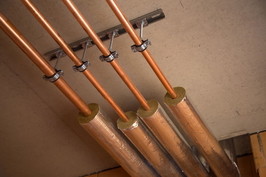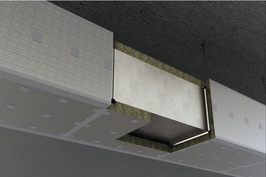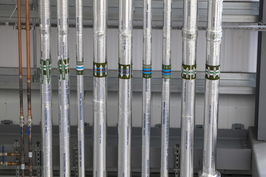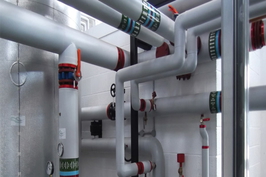Similar Categories
Pipe Insulation Cladding: A Guide to Protect Your Pipes and Save Energy
Pipe insulation cladding is a process of covering the insulated pipes with a protective layer of material that can withstand various weather conditions and prevent heat loss or gain. Pipe insulation cladding is essential for both indoor and outdoor applications, as it can improve the performance and durability of the pipe insulation and reduce the risk of corrosion, condensation, and fire.
Pipe insulation cladding can also enhance the aesthetic appeal of the pipes, as it can hide the unsightly insulation and provide a smooth and uniform finish. Pipe insulation cladding can be made of different materials, such as metal, plastic, or rubber, depending on the type and location of the pipes.
In this article, we will explain the benefits and types of pipe insulation cladding, and how to choose and install the best pipe insulation cladding products from our website Buy Insulation Online.
Benefits of Pipe Insulation Cladding
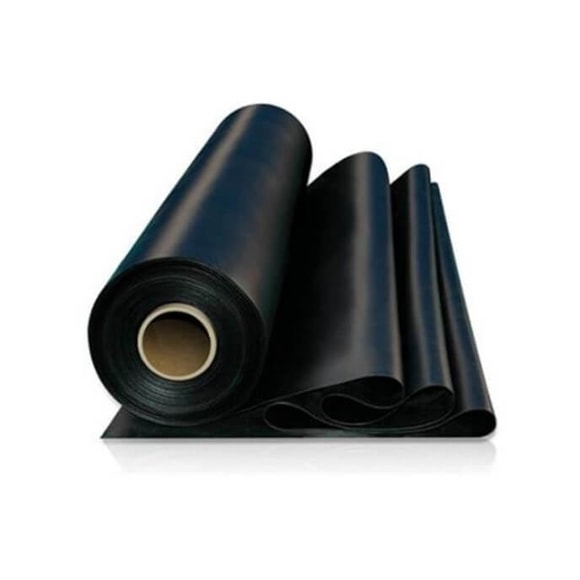 Pipe insulation cladding can provide several benefits for your pipes and your energy bills, such as:
Pipe insulation cladding can provide several benefits for your pipes and your energy bills, such as:
- Protecting the pipe insulation from physical damage: Pipe insulation cladding can shield the insulation from mechanical impacts, abrasion, punctures, and cuts that can compromise its integrity and effectiveness. Pipe insulation cladding can also protect the insulation from UV rays, moisture, insects, rodents, and birds that can degrade or damage the insulation over time.
- Preventing heat loss or gain: Pipe insulation cladding can reduce the thermal conductivity of the insulation and prevent heat transfer between the pipe and the surrounding environment. This can help maintain the desired temperature of the fluid or gas inside the pipe and reduce the energy consumption and costs of heating or cooling systems. Pipe insulation cladding can also prevent condensation on cold pipes, which can cause water damage, mould growth, and corrosion.
- Improving fire safety: Pipe insulation cladding can act as a fire barrier and prevent the spread of flames and smoke in case of a fire. Pipe insulation cladding can also prevent the ignition of the insulation, which can be flammable or combustible depending on the material. Pipe insulation cladding can also reduce the emission of toxic gases and fumes from the insulation in case of a fire.
- Enhancing the appearance of the pipes: Pipe insulation cladding can cover the insulation and provide a neat look for the pipes. Pipe insulation cladding can also come in different colours, textures, and finishes, such as glossy, matte, or embossed, to suit the style and preference of the customers. Pipe insulation cladding can also be customised to fit the shape and size of the pipes, such as bends, elbows, tees, and valves.
Types of Pipe Insulation Cladding
Pipe insulation cladding can be classified into two main categories: rigid and flexible. Rigid pipe insulation cladding is made of solid and stiff materials, such as metal or plastic, that can provide a high level of protection and durability for the insulation. Flexible pipe insulation cladding is made of soft and pliable materials, such as rubber or fabric, that can conform to the shape and size of the pipes and provide a high level of flexibility and adaptability for the insulation.
Some of the most common types of pipe insulation cladding are:
- Metal pipe insulation cladding: Metal pipe insulation cladding is made of aluminium, stainless steel, or galvanised steel, which can provide a high level of resistance to corrosion, fire, and UV rays. Metal pipe insulation cladding can also provide a high level of thermal performance and reflectivity, as it can prevent heat loss or gain and reflect radiant heat. Metal pipe insulation cladding can be installed using screws, rivets, or clips, and can be cut and shaped using metal shears or saws. Metal pipe insulation cladding can be used for both indoor and outdoor applications, such as HVAC systems, industrial pipes, and solar panels.
- Plastic pipe insulation cladding: Plastic pipe insulation cladding is made of PVC, polyethene, or polypropylene, which can provide a high level of resistance to moisture, chemicals, and impact. Plastic pipe insulation cladding can also provide a high level of flexibility and adaptability, as it can be easily bent and stretched to fit the pipes. Plastic pipe insulation cladding can be installed using adhesive, tape, or heat shrink, and can be cut and shaped using scissors or knives. Plastic pipe insulation cladding can be used for both indoor and outdoor applications, such as plumbing pipes, refrigeration pipes, and swimming pool pipes.
- Rubber pipe insulation cladding: Rubber pipe insulation cladding is made of EPDM, neoprene, or nitrile, which can provide a high level of resistance to ozone, weathering, and abrasion. Rubber pipe insulation cladding can also provide a high level of elasticity and resilience, as it can recover its shape and size after being stretched or compressed. Rubber pipe insulation cladding can be installed using adhesive, tape, or clamps, and can be cut and shaped using scissors or knives. Rubber pipe insulation cladding can be used for both indoor and outdoor applications, such as hot water pipes, steam pipes, and ducts.
Examples of Pipe Insulation Cladding Products from Buy Insulation Online
We at Buy Insulation Online offer a variety of pipe insulation cladding products that can suit different types of pipes and applications. Here are some examples of pipe insulation cladding products that you can find on our website:
- Plysolene Polyisobutylene Weatherproofing PIB Duct Insulation Roll: This is a flexible and durable pipe insulation cladding product that is made of polyisobutylene, a synthetic rubber that can resist ozone, UV rays, and water. This product can be used for both indoor and outdoor applications, such as ducts, tanks, and vessels. This product can be installed using adhesive or tape and can be cut and shaped using scissors or knives.
- K-Flex Grey Isogenopak Roll: This is a rigid and robust pipe insulation cladding product that is made of PVC, a plastic that can resist chemicals, fire, and impact. This product can be used for both indoor and outdoor applications, such as refrigeration pipes, plumbing pipes, and air conditioning pipes. This product can be installed using adhesive or heat shrink and can be cut and shaped using scissors or knives.
- Bostik T303 Self-Adhesive Aluminium Foil Roll Tape: This is a flexible and reflective pipe insulation cladding product that is made of aluminium foil, a metal that can resist corrosion, fire, and UV rays. This product can be used for both indoor and outdoor applications, such as HVAC systems, industrial pipes, and solar panels. This product can be installed using self-adhesive and can be cut and shaped using scissors or knives.
- Proclad Weatherproof Pipe Jacketing: This is a rigid and weatherproof pipe insulation cladding product that is made of PVC, a plastic that can resist chemicals, fire, and impact. This product can be used for outdoor applications, such as hot water pipes, steam pipes, and ducts. This product can be installed using screws, rivets, or clips, and can be cut and shaped using shears or saws.
- Stucco Aluminium Pipe Insulation Cladding Sheet: This is a rigid and decorative pipe insulation cladding product that is made of aluminium, a metal that can resist corrosion, fire, and UV rays. This product can be used for both indoor and outdoor applications, such as HVAC systems, industrial pipes, and solar panels. This product can be installed using screws, rivets, or clips, and can be cut and shaped using shears or saws.
- Temati Foster Vaporfas Pipe Jacketing: This is a flexible and fireproof pipe insulation cladding product that is made of glass fibre, a fabric that can resist fire, smoke, and water. This product can be used for both indoor and outdoor applications, such as hot water pipes, steam pipes, and ducts. This product can be installed using adhesive or tape and can be cut and shaped using scissors or knives.
How to Install Pipe Insulation Cladding from Buy Insulation Online
 We at Buy Insulation Online are a leading online supplier of pipe insulation cladding products in the UK. We offer a wide range of pipe insulation cladding products from reputable brands, such as Plysolene, K-Flex, Bostik, Proclad, Stucco, and Temati. We at Buy Insulation Online also offer competitive prices, fast delivery, and excellent customer service.
We at Buy Insulation Online are a leading online supplier of pipe insulation cladding products in the UK. We offer a wide range of pipe insulation cladding products from reputable brands, such as Plysolene, K-Flex, Bostik, Proclad, Stucco, and Temati. We at Buy Insulation Online also offer competitive prices, fast delivery, and excellent customer service.
Here are some general steps to install the pipe insulation cladding products:
- Measure the pipes and the insulation: You need to measure the length, diameter, and thickness of the pipes and the insulation, and calculate the amount of pipe insulation cladding product that you need to cover them. You also need to measure and mark the locations of the joints, fittings, and valves on the pipes and the insulation, and cut the pipe insulation cladding product accordingly.
- Prepare the pipes and the insulation: You need to clean the pipes and the insulation from any dirt, dust, grease, or moisture, and make sure that they are dry and smooth. You also need to apply a primer or a sealant on the pipes and the insulation, if required by the manufacturer or the website, to improve the adhesion and the durability of the pipe insulation cladding product.
- Apply the pipe insulation cladding product: You need to apply the pipe insulation cladding product on the pipes and the insulation, starting from one end and working your way to the other end. You need to align the edges and the seams of the pipe insulation cladding product, and secure them with the appropriate method, such as screws, rivets, clips, adhesive, tape, or heat shrink. You also need to smooth out any wrinkles, bubbles, or gaps in the pipe insulation cladding product, and trim any excess material.
- Check the pipe insulation cladding product: You need to check the pipe insulation cladding product for any defects, damages, or leaks, and fix them if necessary.
- Gather the Necessary Tools: Before you start, ensure you have all the tools required for installation, such as a tape measure, utility knife or scissors, adhesive or fasteners (if necessary), and safety equipment like gloves and goggles.
- Measure and Cut Insulation Cladding: Use a tape measure to determine the length required for the insulation cladding. Measure and mark the locations of fittings, joints, and valves on both the pipes and the insulation material. Cut the insulation cladding material precisely according to these measurements using a utility knife or scissors.
- Prepare the Surface: Thoroughly clean the pipes and insulation to remove any debris, dirt, or moisture that might affect adhesion. If recommended by the manufacturer, apply a primer or sealant to the surface to enhance the bonding of the insulation cladding.
- Apply the Insulation Cladding: Start by placing the insulation cladding over the pipe, ensuring it aligns correctly. Secure it in place using the appropriate method recommended by the manufacturer, whether it's adhesive, screws, clips, tape, or heat shrink. Pay close attention to sealing joints and edges properly to prevent any gaps or exposed areas.
- Smooth and Trim: Smooth out the insulation cladding to remove any wrinkles, bubbles, or unevenness that may have occurred during installation. Trim any excess material carefully for a neat and professional finish.
- Inspect for Defects: After installation, inspect the entire length of the insulated pipes for any defects, damages, or areas that might be prone to leaks. Address any issues promptly to ensure the insulation cladding provides effective coverage and protection.
- Maintenance and Further Checks: Regularly inspect the insulation cladding for signs of wear, tear, or damage. Address any issues promptly to maintain the integrity of the insulation and ensure optimal performance.
Always refer to the specific guidelines provided by the manufacturer or the website from which you purchased the insulation cladding product for detailed instructions tailored to the product you are using.
How to Compare and Contrast Pipe Insulation Cladding Products from Buy Insulation Online
We at Buy Insulation Online offer a range of pipe insulation cladding products that can meet the different needs and preferences of customers. However, not all pipe insulation cladding products are the same, and some may have advantages and disadvantages over others. Therefore, it is important to compare and contrast the pipe insulation cladding products and choose the best one for your pipes and applications.
To compare and contrast the pipe insulation cladding products from our website Buy Insulation Online, you need to consider the following criteria:
- The material and the performance of the pipe insulation cladding product: The material and the performance of the pipe insulation cladding product will determine the level of protection and durability that it can provide for the insulation and the pipes. For example, metal pipe insulation cladding products can provide a high level of resistance to corrosion, fire, and UV rays, but they may also be heavy, noisy, and expensive. Plastic pipe insulation cladding products can provide a high level of resistance to moisture, chemicals, and impact, but they may also be prone to cracking, fading, and warping. Rubber pipe insulation cladding products can provide a high level of resistance to ozone, weathering, and abrasion, but they may also be susceptible to tearing, shrinking, and swelling.
- The flexibility and the adaptability of the pipe insulation cladding product: The flexibility and the adaptability of the pipe insulation cladding product will determine the level of ease and convenience that it can provide for the installation and maintenance of the insulation and the pipes. For example, flexible pipe insulation cladding products can provide a high level of flexibility and adaptability, as they can be easily bent and stretched to fit the pipes. However, they may also be less durable and stable and may require more frequent repairs and replacements. Rigid pipe insulation cladding products can provide a high level of durability and stability, as they can provide a solid and stiff cover for the pipes. However, they may also be less flexible and adaptable and may require more precise measurements and cuts.
- The appearance and the style of the pipe insulation cladding product: The appearance and the style of the pipe insulation cladding product will determine the level of aesthetic appeal and attractiveness that it can provide for the insulation and the pipes. For example, glossy pipe insulation cladding products can provide a high level of reflectivity and shine, but they may also be more visible and conspicuous and may attract more dirt and dust. Matte pipe insulation cladding products can provide a low level of reflectivity and shine, but they may also be more discreet and subtle and may hide more dirt and dust. Embossed pipe insulation cladding products can provide a high level of texture and pattern, but they may also be more difficult and expensive to produce and install.
Conclusion
Pipe insulation cladding is a process of covering the insulated pipes with a protective layer of material that can withstand various weather conditions and prevent heat loss or gain. Pipe insulation cladding is essential for both indoor and outdoor applications, as it can improve the performance and durability of the pipe insulation and reduce the risk of corrosion, condensation, and fire. Pipe insulation cladding can also enhance the aesthetic appeal of the pipes, as it can hide the unsightly insulation and provide a smooth and uniform finish.
We at Buy Insulation Online are a leading online supplier of pipe insulation cladding products in the UK. We offer a wide range of pipe insulation cladding products from reputable brands, such as Plysolene, K-Flex, Bostik, Proclad, Stucco, and Temati. We at Buy Insulation Online also offer competitive prices, fast delivery, and excellent customer service.
We hope that this article has helped you understand the benefits and types of pipe insulation cladding, and how to choose and install the best pipe insulation cladding products from our website Buy Insulation Online. If you have any questions or queries, please feel free to contact us or visit our website.

